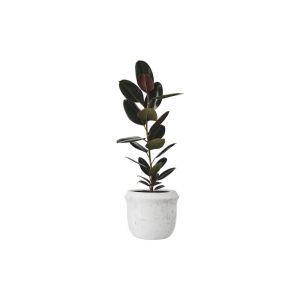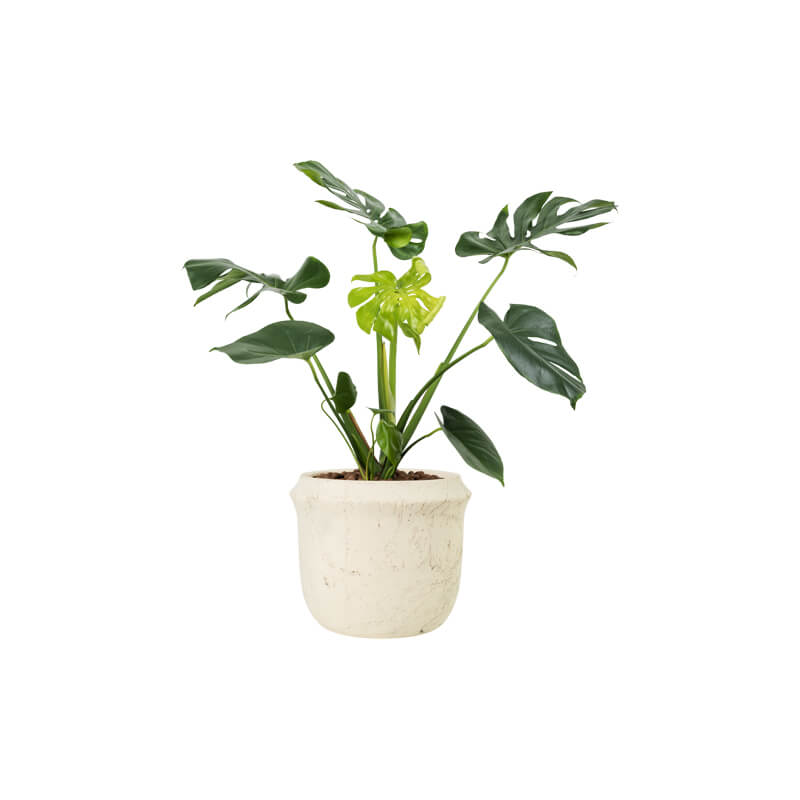- Home
- Vines & Climbers
- Monstera Deliciosa – Swiss cheese plant, split-leaf philodendron
Monstera Deliciosa - Swiss cheese plant, split-leaf philodendron
Common names: Swiss cheese plant, Split-leaf philodendron, Cutleaf, Delicious monster, Hurricane plant, fruit salad tree (in reference to its edible fruit, which tastes similar to a fruit salad), ceriman (Trinidad), ojal (Venezuela), hojadillo (Colombia), monster fruit, monsterio delicio, monstereo, Mexican breadfruit, windowleaf, balazo and Penglai banana.

usda zones
sunlight
Soil & water
fauna
Monstera deliciosa, often referred to as the Swiss Cheese Plant, is an
iconic and beloved tropical houseplant that has become a symbol of
indoor greenery. Its distinctive and fenestrated leaves make it a
favorite among plant enthusiasts, and its adaptability to different
indoor environments has contributed to its widespread popularity.
Native to the rainforests of Central America, Monstera deliciosa has its roots in the lush and diverse ecosystems of regions such as Mexico, Guatemala, and Honduras. The plant’s natural habitat provides valuable insights into its preferred growing conditions, helping enthusiasts replicate the ideal environment for optimal health and growth.
The most distinctive feature of Monstera deliciosa is its large, glossy
leaves that develop unique splits and holes as the plant matures. This
characteristic has earned it the nickname “Swiss Cheese Plant.” The
leaves, resembling pieces of art, can grow to impressive sizes, with
mature specimens boasting leaves that are often over a foot in diameter.
The fenestrations, or natural holes, in the leaves contribute to the
plant’s ornamental appeal, giving it a tropical and exotic aesthetic.
Monstera deliciosa is a climbing plant, and in its natural habitat, it can reach impressive heights by attaching itself to trees or other support structures. When cultivated indoors, the plant can be trained to climb using stakes or other supports, making it a versatile choice for various living spaces.
Care Requirements for Monstera Deliciosa
Successfully growing and caring for Monstera deliciosa requires attention to several key factors, ensuring the plant thrives in its new environment.
1. Light: Monstera deliciosa is adaptable when it comes to light conditions, but it generally prefers bright, indirect light. Avoid exposing it to harsh, direct sunlight, which can scorch the leaves. However, too little light can slow down growth and result in leggy, less vibrant foliage. Finding the right balance is crucial for the plant’s overall well-being.
2. Soil: Well-draining potting mix rich in organic matter is ideal for Monstera deliciosa. A mix designed for tropical plants or aroid mix works well. This type of soil ensures good aeration and prevents waterlogging, a condition that can lead to root rot.
3. Watering: Maintaining consistent moisture is key for Monstera deliciosa. Water the plant when the top inch of soil feels dry to the touch. Be cautious not to overwater, as excessive moisture can lead to root problems. Adjust the watering frequency based on factors like temperature, humidity, and the plant’s growth stage.
4. Humidity: Monstera deliciosa thrives in high humidity, mimicking its native rainforest environment. While it can adapt to average indoor humidity levels, occasional misting or placing a humidity tray nearby can be beneficial, especially during drier seasons.
5. Temperature: This tropical plant prefers temperatures between 65°F to 80°F (18°C to 27°C). Protect it from drafts and sudden temperature fluctuations, which can stress the plant.
6. Fertilization: During the growing season (spring and summer), feed Monstera deliciosa with a balanced liquid fertilizer every 2-4 weeks. Reduce or eliminate fertilization in the fall and winter when the plant enters a dormant phase.
Ensuring that your Monstera deliciosa receives the proper amount and quality of light is foundational to its care. Be attentive to its light requirements and adjust its placement accordingly, especially if you notice signs of inadequate or excessive light exposure.
7. Pruning: Regular pruning helps maintain a desirable shape and size for Monstera deliciosa. Trim yellow or damaged leaves and prune to control its growth. Cut just above a node to encourage branching.
Propagation Methods
Sharing the joy of Monstera deliciosa often involves propagation, allowing enthusiasts to multiply their plant collection or share the beauty of this tropical specimen with others. Here are two popular methods for propagating Split-leaf philodendron: 1. Stem Cuttings:- Select a healthy stem with a few leaves.
- Cut the stem just below a node using clean, sharp scissors or pruning shears.
- Place the cutting in water or directly into soil, ensuring the node is submerged or buried.
- Wait for roots to develop before transplanting into a larger container.
- Choose a healthy stem and make a small incision or remove a section of bark.
- Apply rooting hormone to the exposed area.
- Wrap the incised portion with moist sphagnum moss, covering it with plastic wrap.
- Once roots form, cut below the rooted area and transplant it.


1 review for Monstera Deliciosa – Swiss cheese plant, split-leaf philodendron
Sorry, no reviews match your current selections
 Monstera Deliciosa - Swiss cheese plant, split-leaf philodendron
Monstera Deliciosa - Swiss cheese plant, split-leaf philodendron 






was alive and shipped quite safely